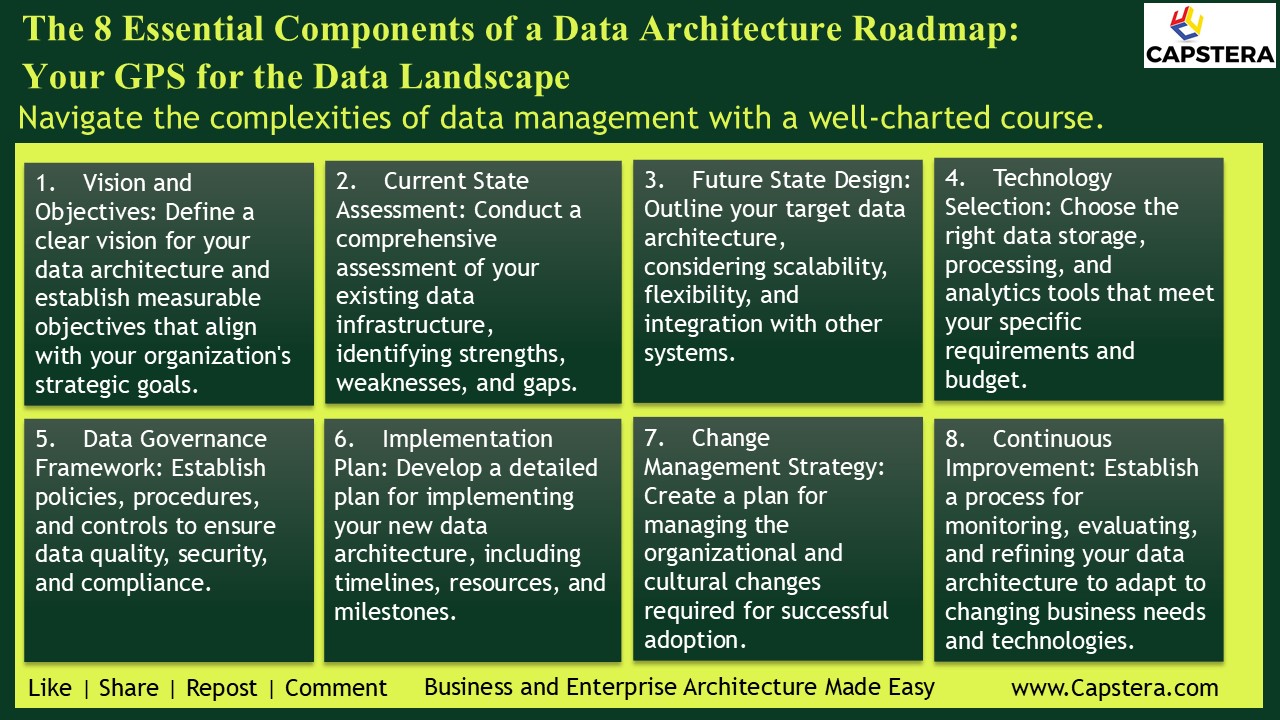
The 8 Essential Components of a Data Architecture Roadmap: Your GPS for the Data Landscape
Navigate the complexities of data management with a well-charted course.
Data is the lifeblood of modern organizations, but without a clear roadmap, it’s easy to get lost in the vast and ever-changing data landscape. A well-crafted data architecture roadmap provides a strategic guide for your organization’s data journey, ensuring alignment with business goals and maximizing the value of your data assets.
- Vision and Objectives: Define a clear vision for your data architecture and establish measurable objectives that align with your organization’s strategic goals.
- Current State Assessment: Conduct a comprehensive assessment of your existing data infrastructure, identifying strengths, weaknesses, and gaps.
- Future State Design: Outline your target data architecture, considering scalability, flexibility, and integration with other systems.
- Technology Selection: Choose the right data storage, processing, and analytics tools that meet your specific requirements and budget.
- Data Governance Framework: Establish policies, procedures, and controls to ensure data quality, security, and compliance.
- Implementation Plan: Develop a detailed plan for implementing your new data architecture, including timelines, resources, and milestones.
- Change Management Strategy: Create a plan for managing the organizational and cultural changes required for successful adoption.
- Continuous Improvement: Establish a process for monitoring, evaluating, and refining your data architecture to adapt to changing business needs and technologies.
A well-defined data architecture roadmap is essential for navigating the complexities of data management and unlocking the full potential of your data assets.
